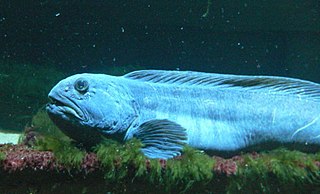Related Research Articles

The Apicomplexa are organisms of a large phylum of mainly parasitic alveolates. Most possess a unique form of organelle structure that comprises a type of (non-photosynthetic) plastid called an apicoplast—with an apical complex membrane. The organelle's apical shape is an adaptation that the apicomplexan applies in penetrating a host cell.

The order Cephalaspidea, also known as the headshield slugs and bubble snails, is a major taxon of sea slugs and bubble snails, marine gastropod mollusks within the larger clade Euopisthobranchia. Bubble shells is another common name for these families of marine gastropods, some of which have thin bubble-like shells. This clade contains more than 600 species.

Pulmonata or pulmonates is an informal group of snails and slugs characterized by the ability to breathe air, by virtue of having a pallial lung instead of a gill, or gills. The group includes many land and freshwater families, and several marine families.

Sorbeoconcha is a taxonomic clade of snails, i.e. gastropods, mainly marine species with gills and opercula, within the clade Caenogastropoda.

The gregarines are a group of Apicomplexan alveolates, classified as the Gregarinasina or Gregarinia. The large parasites inhabit the intestines of many invertebrates. They are not found in any vertebrates. Gregarines are closely related to both Toxoplasma and Plasmodium, which cause toxoplasmosis and malaria, respectively. Both protists use protein complexes similar to those that are formed by the gregarines for gliding motility and for invading target cells. This makes the gregarines excellent models for studying gliding motility, with the goal of developing treatment options for both toxoplasmosis and malaria. Thousands of different species of gregarine are expected to be found in insects, and 99% of these gregarine species still need to be described. Each insect species can be the host of multiple gregarine species. One of the most-studied gregarines is Gregarina garnhami. In general, gregarines are regarded as a very successful group of parasites, as their hosts are distributed over the entire planet.

Feliformia is a suborder within the order Carnivora consisting of "cat-like" carnivorans, including cats, hyenas, mongooses, viverrids, and related taxa. Feliformia stands in contrast to the other suborder of Carnivora, Caniformia.

Zoarcoidei is a suborder of marine ray-finned fishes belonging to the order Scorpaeniformes. The suborder includes the wolffishes, gunnels and eelpouts. The suborder includes about 400 species. These fishes predominantly found in the boreal seas of the northern hemisphere but they have colonised the southern hemisphere.

In biology, taxonomic rank is the relative level of a group of organisms in an ancestral or hereditary hierarchy. A common system of biological classification (taxonomy) consists of species, genus, family, order, class, phylum, kingdom, and domain. While older approaches to taxonomic classification were phenomenological, forming groups on the basis of similarities in appearance, organic structure and behaviour, methods based on genetic analysis have opened the road to cladistics.

Prostigmata is a suborder of mites belonging to the order Trombidiformes, which contains the "sucking" members of the "true mites" (Acariformes).

Adeleorina is a suborder of parasites in the phylum Apicomplexa.
Eimeriorina is a suborder of phylum Apicomplexa.

Endeostigmata is a suborder of acariform mites. There are about ten families in Endeostigmata. The grouping is strongly suspected to be paraphyletic, containing unrelated early diverging lineages of mites.
Haemosporidiasina (Haemosporidia) is a subclass of apicomplexans described by Jacques Euzéby in 1988. The taxon is very similar to Aconoidasida.

Phyllodocida is an order of polychaete worms in the subclass Aciculata. These worms are mostly marine, though some are found in brackish water. Most are active benthic creatures, moving over the surface or burrowing in sediments, or living in cracks and crevices in bedrock. A few construct tubes in which they live and some are pelagic, swimming through the water column. There are estimated to be more than 4,600 accepted species in the order.
The Eugregarinorida are the most large and diverse order of gregarines — parasitic protists belonging to the phylum Apicomplexa. Eugregarines are found in marine, freshwater and terrestrial habitats. These species possess large trophozoites that are significantly different in morphology and behavior from the sporozoites. This taxon contains most of the known gregarine species.
Aseptatorina is a suborder of parasitic alveolates of the phylum Apicomplexa
Blabericolidae is a family of parasitic alveolates in the phylum Apicomplexia.
Stylocephaloidea is a superfamily of parasitic alveolates of the phylum Apicomplexia
Stylocephaloidea is a superfamily of parasites of the phylum Apicomplexia.
Gregarinicae is a superfamily of parasitic alveolates of the phylum Apicomplexia
References
- ↑ Clopton, Richard E. (2009). "Phylogenetic Relationships, Evolution, and Systematic Revision of the Septate Gregarines (Apicomplexa: Eugregarinorida: Septatorina)" (PDF). Comparative Parasitology. 76 (2): 167–190. doi:10.1654/4388.1.